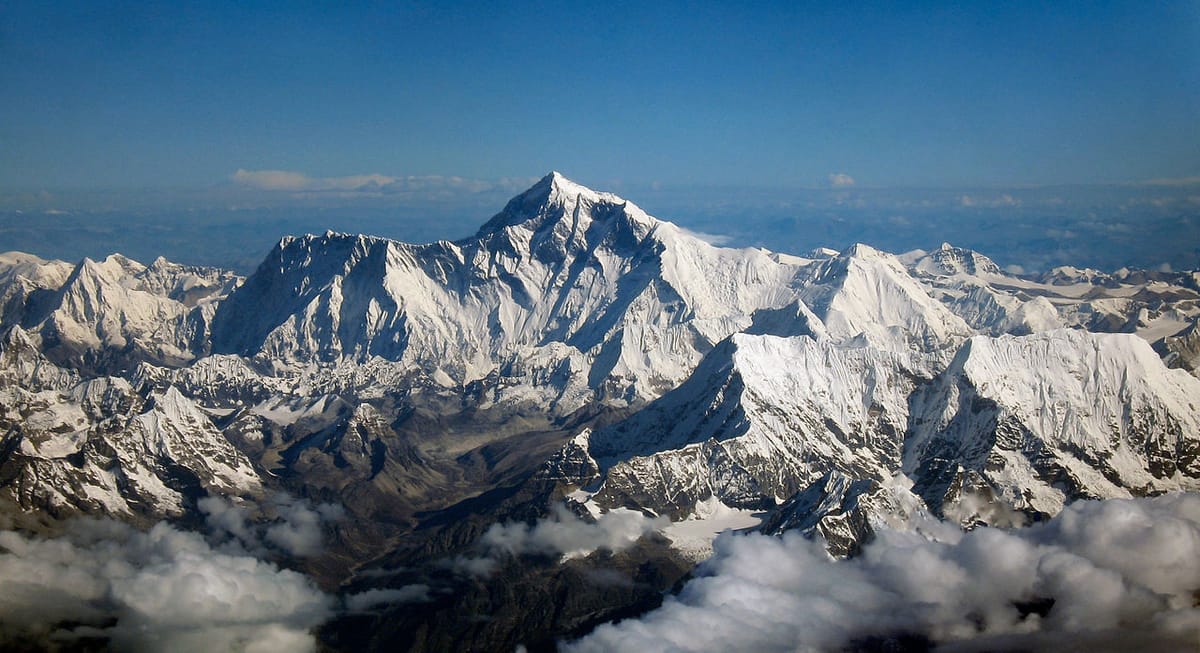Not Your Typical Fashion Show: Promoting Sustainable Fashion on Everest
The Everest Runway set a Guinness World Record for the highest altitude fashion show, but focused on raising awareness about climate change, our footprint, and sustainable fashion.

From producing more carbon than international flights to polluting the oceans with microplastics, the fashion industry has had major effects on the environment. According to this report, the fashion industry generates 4% of the world’s waste—about 92 million tons. From Nike dispensing shoes that could not be sold to H&M incinerating tons of unsold products, the industry is now under severe pressure from younger, more environmentally conscious consumers. And the proof is in the pudding—H&M’s sales have declined rapidly, while brands like Patagonia and REI are aggressively promoting reducing and reusing. While the industry has been a major polluter, now the trend is shifting in a big way towards zero waste.
The “Everest Fashion Runway” was recently held in Nepal—an event that broke a Guinness World Record for the “highest altitude fashion show”, but more importantly, their goal was to raise awareness about climate change while promoting sustainable fashion. The event was held at 5,350m (17,515ft) on January 29th, 2020 at Kala Patthar—a UNESCO World Heritage Site in the Nepalese Himalayas that provides the most accessible views of Everest. It was part of the Visit Nepal 2020 campaign of the Nepal Tourism Board—a national development strategy to promote tourism in the country. Visit Nepal’s commitment includes a focus on climate change, integration of conservation, green initiatives, as well as development with minimal impact on the environment.

The event used natural and organic materials along with bio-degradable clothes, shampoo, detergent, and solar technology on the trek up to Kala Patthar. Apart from promoting sustainable fashion, another focus was to promote the conversation about the effects of climate change on Mt. Everest. The event featured clothing and designs which were made from wool, felt, and pashmina—all handmade, renewable, sustainable, and biodegradable textiles materials. The organizers hope that by setting a record-breaking example, fashion industries around the world would be encouraged to adopt and promote sustainable fashion. The main fashion designer behind the event was Ramila Nemkul—an emerging name in the world of fashion, she aims to promote ethical fashion in the clothing industry. The "Made in Nepal" biodegradable fabrics is an initiative to help women upliftment in Nepal.
https://twitter.com/LiarRihanna/status/1222164654069141510?s=20
"One of the most polluting industries in the world"
The organiser, Dr. Pankaj Gupta, said, “18 supermodels from 10 different countries walked the ramp to create history. The journey to Kala Patthar (above Everest base camp) began on Jan 17th from Lukla and was completed in nine days. On the way, the models used a waterless bath technology and saved more than 8000 litres of water in the Himalaya. The fashion show lasted for one hour at 5644m above sea level. The apparel used in the fashion show was biodegradable including the shoes. The battery used during the shooting was brought back to Kathmandu for proper disposal and the models used probiotic detergent to lessen their carbon footprint.”
Mountaineer and explorer Dawa Steven Sherpa, also the CEO of Asian Trekking, a prominent expedition outfit based out of Kathmandu, told The Outdoor Journal, "This was a challenge to the fashion industry, which is one of the most polluting industries in the world, that it must act more responsibly and sustainably. This was the main mission of this fashion show and why I agreed to be a part of it”. His company handled all permits and government liaison, guiding and logistics, accommodation, stage and ramp construction, film crew support, and medical evacuations".

While there are a lot of bad actors in the industry, there are many that are trying to shift the trend. The Outdoor Journal has in the past reviewed gear from “Toad&Co”. Originally “Horny Toad”, established in 1991, they changed their name in 2015 to “Toad&Co”. A renowned clothing gear brand, as of 2016, the cotton used in their fabrics is organic. With a clear mission to lead with integrity and weave optimism into everything they do, as well as create meaningful change through a socially and environmentally smart business, Toad&Co aims to inspire people to live their fullest lives.
Similarly, Cotopaxi is another brand whose motto is “do good”—their focus is on sustainable product design as well as sustainable working conditions. They provide targeted grants to nonprofits around the world—from volunteering at local farms to helping install irrigation pumps in Myanmar, they’re committed to helping eradicate poverty.

Another one of our favourites is Patagonia. Founded by climber and environmentalist Yvon Chouinard in 1973, Patagonia is a sustainable clothing and equipment company. A major contributor to environmental groups, they donate 1% of their total sales or 10% of their profit (whichever is higher). Chouinard was a founding member of One Percent for the Planet, an organisation that encourages business to contribute at least one percent of their annual sales in order to create a healthy planet. The Outdoor Journal is proud to be a member as well.
To know more about the "Everest Fashion Runway", stay tuned as the entire journey will air as a reality show (MTV was the official media partner) and will be telecast in April and May this year.
[gallery type="slideshow" size="large" ids="14931,15202,15203,15204,15207,15208"]






Comments ()